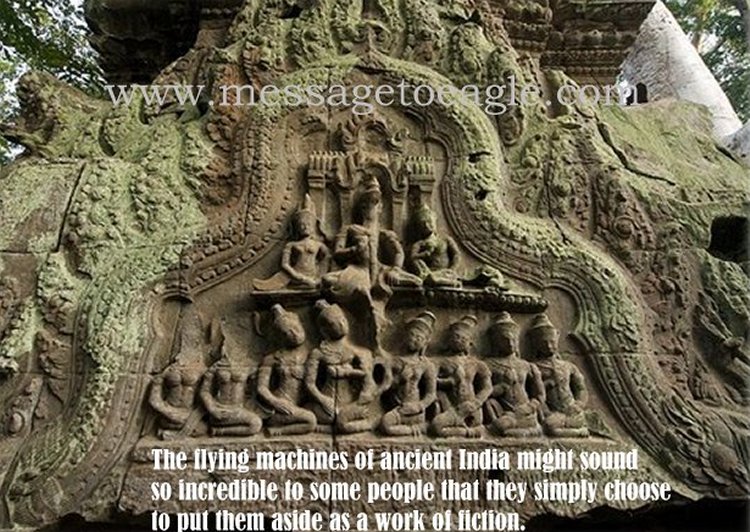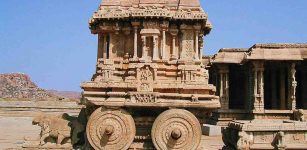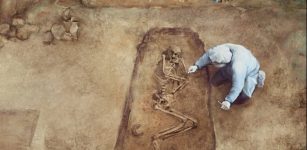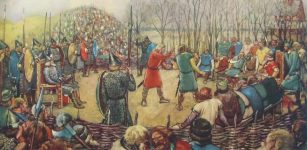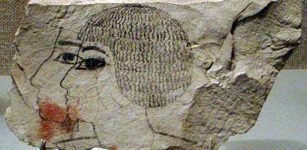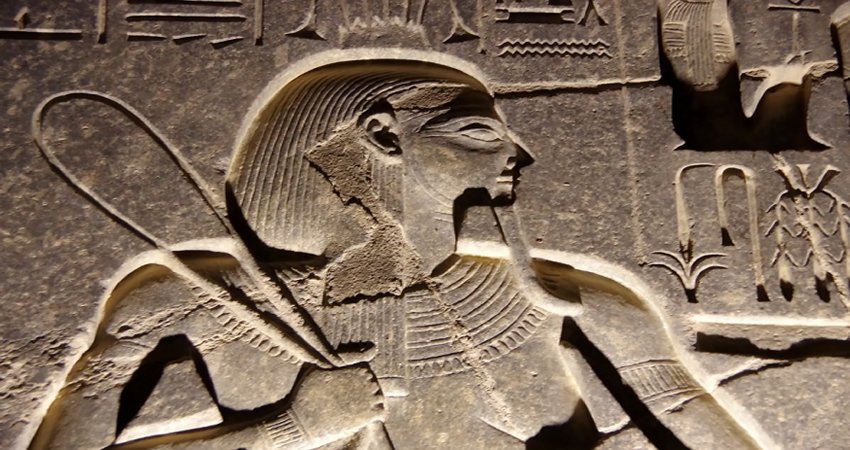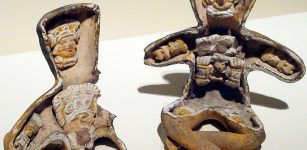Vimanas – Flying Machines Soaring Through Ancient Sky Of India
A. Sutherland – MessageToEagle.com – By studying the ancient Sanskrit texts with great attention to detail, we can rediscover prehistoric aviation activities of the Indian gods.
India was the land of flying machines described in many ancient texts like Yajurveda, Mahabharata, Samarangana Sutradhara, Rigweda, Ramayana and even older ones.
Back in 1870, the Sanskrit College in Calcutta published a document, which contained references and descriptions of various ancient Indian spacecraft. Later in 1895 B.G, Talpul, a Hindu scientist attempted to construct a flying machine based on an ancient text’s instructions.
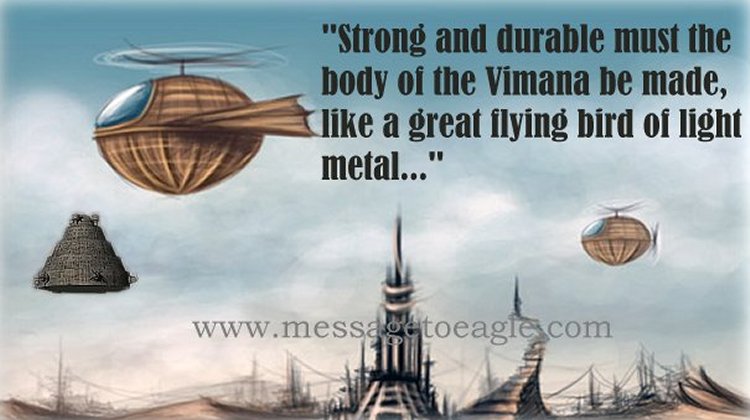
In 1975, Swami Dayananda Saraswati concluded, after having studied the Rig-Veda that flying machines did exist in ancient India. In his work entitled “Rigaveda Bhashya Bhumika”, he mentions aircraft in the Vedic mantras that:
“is going from one island to another with these crafts in three days and nights… and just an intelligent people constructed ships to cross oceans… jumping into space speedily with a craft using fire and water… containing 12 stamghas (pillars), one wheel, three machines, 300 pivots, and 60 instruments…”
There are no physical remains of ancient Indian aircraft, but the Vedic literature delivers plenty of descriptions of flying machines called Vimanas.
The Sanskrit term “Vimana vidya” means “the science of building and piloting airships” so the term Vimana can easily be translated as “flying machine”.
One of the most remarkable translations on India’s prehistoric has been made by Maharshi Bharadwaja, one of the greatest Hindu sages and one of the Seven Great Sages or Rishis.
His work – known as Aeronautics – contains absolutely incredible information on prehistoric aviation of India and is described as A Manuscript from the Prehistoric Past, published by the International Academy of Sanskrit Research, Mysore, India.
It describes the arts of manufacturing various types of aeroplanes of smooth and comfortable travel in the sky, as a unifying force for the Universe, contributive to the well-being of mankind.
These aircraft called Vimana can go by its own force, like a bird, on earth, or water, or air. It can travel in the sky, from place to place, land to land, or globe to globe.
“We shall not be very surprised when we learn in the Ramayana that Vimanas , i.e., flying machines, navigated at great heights with the aid of quicksilver and a great propulsive wind. The Vimanas could cover vast distances and could travel forward, upward and downward. Enviably maneuverable space vehicles!” we read in Erich von Daniken’s “Chariots of the Gods”.
Vimanas, of various shapes and sizes and with two or more engines, were sophisticated flying machines equipped with deadly weapons, and though they were used for ordinary travel and transports, their main purpose was warfare.
They flew with the “speed of the wind” and gave forth a “melodious sound”. Some Vimanas were saucer-shaped while others were cigar-shaped. The Vimanas – often described as shining flying cars, or celestial cars – were kept in a “Vimana Griha”, a type of hanger.
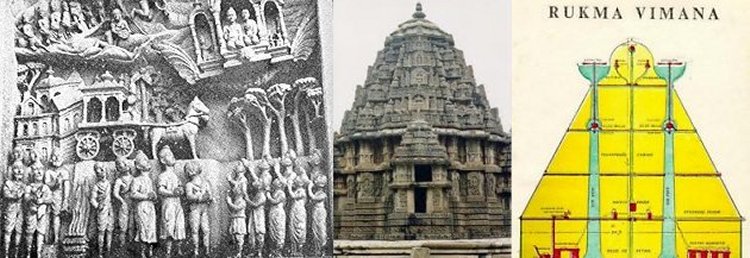
Many of them were gigantic; even their propulsion units were deliberately constructed to resemble some of the largest animals on the ground.
“A huge and terrible black vimana made of black iron, it was 400 yojanas high and as many wide, equipped with engines set in their proper places. No steeds nor elephants propelled it. Instead it was driven by machines that looked like elephants.” (Ghatotrachabadma)
The manuscript by Maharshi Bharadwaja describes “the secrets of constructing aeroplanes, which will not break, which cannot be cut, will not catch fire, and cannot be destroyed; the secret of making planes motionless.. invisible and the secret of hearing conversations and other sounds in enemy places.”
Moreover, it gives us insight into the secret of retrieving photographs of the interior of enemy planes, ascertaining the direction of enemy planes approach, making persons in enemy planes lose consciousness and destroying enemy planes.
Another intriguing interpretation in the manuscript says that
“just as our body if complete in all its limits, can achieve all things, so an aeroplane should be complete in all its parts in order to be effective. Commencing from the photographing-mirror underneath, an aeroplane should have thirty-one parts…”
also,
“metals suitable for aeroplanes, light and heat-absorbing, are of sixteen kinds, according to Shownaka. Great sages have declared that these sixteen metals alone are the best for aeroplane construction..”
In 1875, the Vaimanika Sastra (or Vymaanika-Shaastra), a fourth century B.C. text with diagrams, written by Bharadvajy the Wise, using even older texts as his source, was rediscovered in a temple in India.
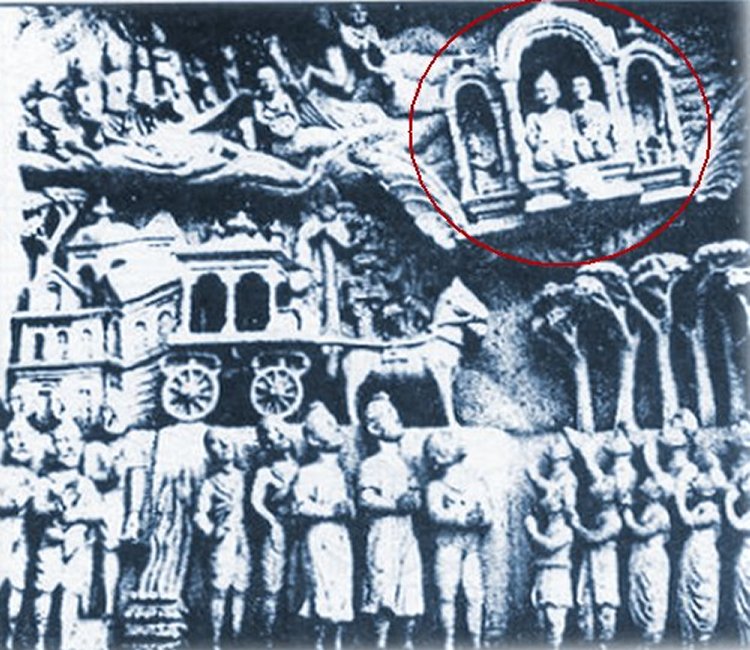
It dealt with the operation of Vimanas and included information on the steering, precautions for long flights, protection of the airships from storms and lightening and how to switch the drive to “solar energy” from a free energy source which sounds like “anti-gravity.”
It describes three types of aircraft, including apparatuses that could neither catch on fire nor break; it also mentions 31 essential parts of these vehicles and 16 materials from which they are constructed, which absorb light and heat; for which reason they were considered suitable for the construction of Vimanas.
The Samarangana Sutradhara contains 230 stanzas related to construction of flying machines. It describes start procedures, cruising for thousands of km, emergency landings, and even possible collisions with birds.
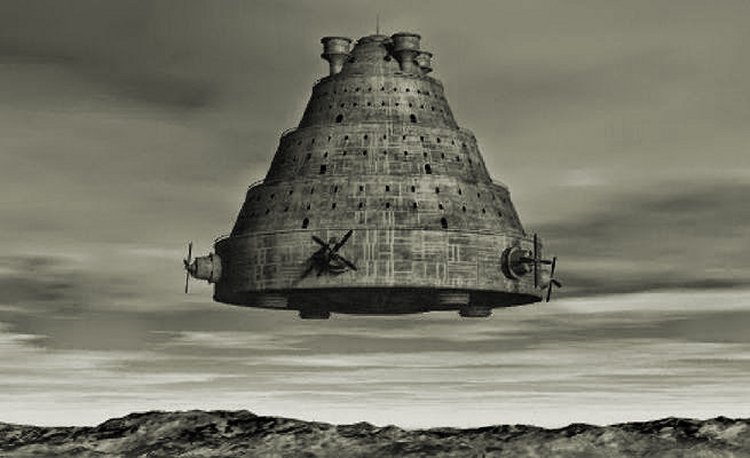
In the texts is written:
“Strong and durable must the body of the Vimana be made, like a great flying bird of light metal. Inside one must put the mercury engine with its iron heating apparatus underneath. By means of the power energy in the which sets the driving whirlwind in motion, a man sitting inside may travel a great distance in the sky. The movements of the Vimana are such that it can vertically ascend, vertically descend, move slanting forwards and backwards. With the help of the machines human beings can fly in the air and the heavenly beings can come down to Earth…”
The Vedic literature makes clear that mercury was a substance used to propel the flying machines. According to the Ramayana and the Dronaparva (part of the Mahabharata), the “aerial car” – vimana – was shaped like a sphere and born along at great speed on a mighty wind generated by mercury that shot out of the back in the form of a roaring flame.
The flying machines of ancient India might sound so incredible to some people that they simply choose to put them aside as a work of fiction.
However, this is not science-fiction. These are true extracts originating from the Sanskrit classical epics dated many thousand years ago.
“There are two categories of ancient Sanskrit texts—the factual records known as the Manusa, and mythical and religious literature known as the Daiva. The Samara Sutradhara, which belongs to the factual type of records, treats of air travel from every angle… If this is the science fiction of antiquity, then it is the best that has ever been written,” says Andrew Tomas in his book “We Are Not the First”.
They reveal an extraordinary technologies, aerodynamics, engineering, electronics, communication and many other achievements, all centuries in advance of our own.
“.. we should not oversimplify and dismiss the old Sanscrit texts as mere myths . The large number of passages from old texts already quoted turns the suspicion that men encountered flying “gods” in antiquity almost into a certainty…” Erich von Daniken, “Chariots of the Gods”
One thing we must remember is that as fascinating as these flying vimanas were, the truth is that they were frequently used for destructive purposes in the battles.
Sophisticated Vimanas were used to conquer the enemy and humans and all other living creatures on the ground suffered fatal consequences in the process.
Written by – A. Sutherland – MessageToEagle.com Senior Staff Writer
Copyright © MessageToeagle.com All rights reserved. This material may not be published, broadcast, rewritten or redistributed in whole or part without the express written permission of MessageToeagle.com

